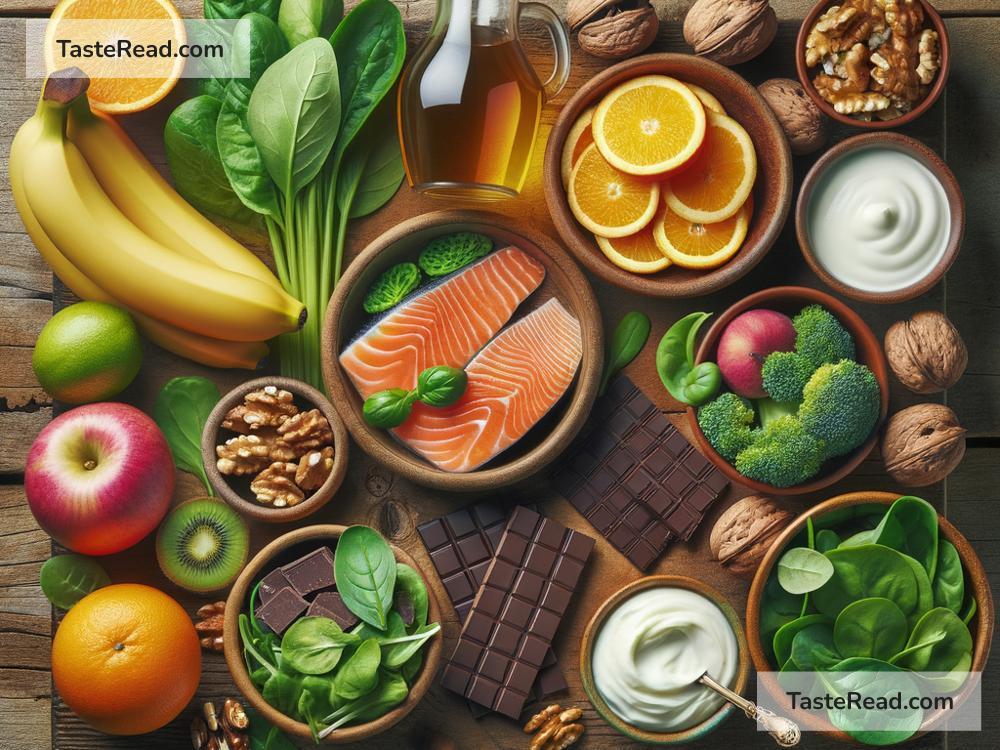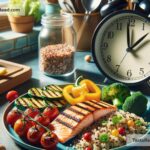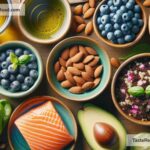Foods for Enhancing Menstrual Health: Eating Right for a Healthier Period
Menstruation is a natural part of every woman’s life, but it often comes with challenges like bloating, pain, fatigue, and mood swings. While hormonal changes drive these symptoms, the foods you eat can play an important role in how your body handles menstruation. A healthy diet can reduce cramps, provide energy, balance hormones, and even regulate your cycle over time. Let’s explore some easy-to-find foods that can support your menstrual health.
1. Iron-Rich Foods for Energy
During menstruation, your body loses blood, and along with it, iron. Low iron levels can lead to exhaustion or even anemia in severe cases. To replenish this vital nutrient, include iron-rich foods in your diet such as:
- Spinach, Kale, and Other Leafy Greens: These contain plant-based iron and are loaded with vitamins that support your overall health.
- Lentils, Beans, and Chickpeas: Affordable and versatile, these are great vegetarian sources of iron.
- Red Meat: If you eat meat, lean cuts of beef are excellent at restoring iron levels.
- Dried Fruits (like raisins and apricots): These are portable, sweet, and rich in iron.
Pair iron-rich foods with vitamin C sources, like oranges or strawberries, to improve iron absorption in your body.
2. Magnesium for Reducing Cramps
Menstrual cramps can make your period uncomfortable, but magnesium—a natural muscle relaxer—may help ease them. Foods containing magnesium include:
- Dark Chocolate (70% or higher): A comforting treat that also provides minerals like magnesium.
- Nuts and Seeds (like almonds, sunflower seeds, and pumpkin seeds): These are energy-boosting snacks high in magnesium.
- Avocados: Packed with healthy fats and magnesium.
- Bananas: Easy to grab and perfect for combating both cramps and bloating.
Adding magnesium-rich foods to your meals may help calm muscle spasms in the uterus, reducing period discomfort over time.
3. Calcium for Hormonal Balance
Calcium doesn’t just strengthen your bones—it also helps regulate hormones and reduce PMS symptoms like mood swings and irritability. Foods rich in calcium include:
- Milk, Yogurt, and Cheese: Dairy products are reliable sources of calcium.
- Fortified Plant Milks: If you’re vegan or lactose-intolerant, plant-based milks (like almond or soy milk) often contain added calcium.
- Broccoli and Bok Choy: These leafy greens are surprising sources of calcium.
- Tofu: Especially the kind made with calcium sulfate, tofu is a great meat alternative.
Incorporating calcium regularly can help your mood stay steady, even with fluctuating hormone levels during your period.
4. Omega-3 Fatty Acids for Inflammation
Studies suggest that omega-3 fatty acids may reduce inflammation in the body, which is the root cause of menstrual pain. These healthy fats can also regulate mood and reduce bloating. Include omega-3 rich foods like:
- Fatty Fish (like salmon, mackerel, and sardines): These are excellent sources of omega-3.
- Walnuts: A convenient snack that promotes heart and hormonal health.
- Chia Seeds and Flaxseeds: Sprinkle these on yogurt, oatmeal, or smoothies.
- Fish Oil Supplements: If you don’t eat fish regularly, supplements can help provide omega-3 benefits.
Regular intake of omega-3s might make your periods less painful and keep inflammation under control.
5. Fiber for Digestive Health
Hormonal fluctuations can slow down digestion, leading to bloating and constipation. Fiber-rich foods help keep your digestive system moving smoothly. Try eating:
- Whole Grains (like oats, quinoa, and brown rice): These provide sustained energy while supporting digestion.
- Fresh Fruits (like apples, oranges, and berries): Naturally sweet and easy to incorporate into meals.
- Vegetables (like carrots, peas, and celery): Add them to salads, soups, or stir-fries.
- Legumes: Beans, peas, and lentils are powerhouses of fiber.
A fiber-rich diet will help flush out excess estrogen, which can reduce bloating and other period-related symptoms.
6. Hydration: Don’t Forget Water
Staying hydrated is one of the simplest ways to improve your menstrual health. Drinking enough water helps reduce bloating, improves circulation, and supports kidney function to remove toxins from your body. If plain water feels boring, try herbal teas like:
- Chamomile Tea: Known for calming cramps and reducing stress.
- Ginger Tea: An excellent anti-inflammatory option for period discomfort.
- Peppermint Tea: Can ease bloating and indigestion.
Hydration is essential throughout your cycle, so be sure to drink enough fluids daily.
7. Foods to Avoid
While many foods are beneficial during menstruation, some can make your period worse. Try to avoid or limit:
- Salty Snacks: Chips and processed foods can increase water retention and bloating.
- Sugary Treats: Too much sugar can lead to mood swings and energy crashes.
- Caffeine: Excessive coffee or soda can worsen cramps and contribute to irritability.
- Alcohol: Drinking alcohol can dehydrate you and worsen menstrual symptoms.
By cutting back on these, you can help your body feel more balanced during your period.
Conclusion
What you eat can make a big difference in how you experience your period. Focus on nutrient-dense foods like leafy greens, nuts, seeds, fatty fish, and whole grains to support your body’s needs. Stay hydrated, avoid overly salty or sugary foods, and aim for balance in your diet. With a little effort, these choices can lead to less discomfort, better energy, and a more manageable menstrual cycle. Eating well doesn’t have to be complicated—start small, and give your body the care it deserves!


